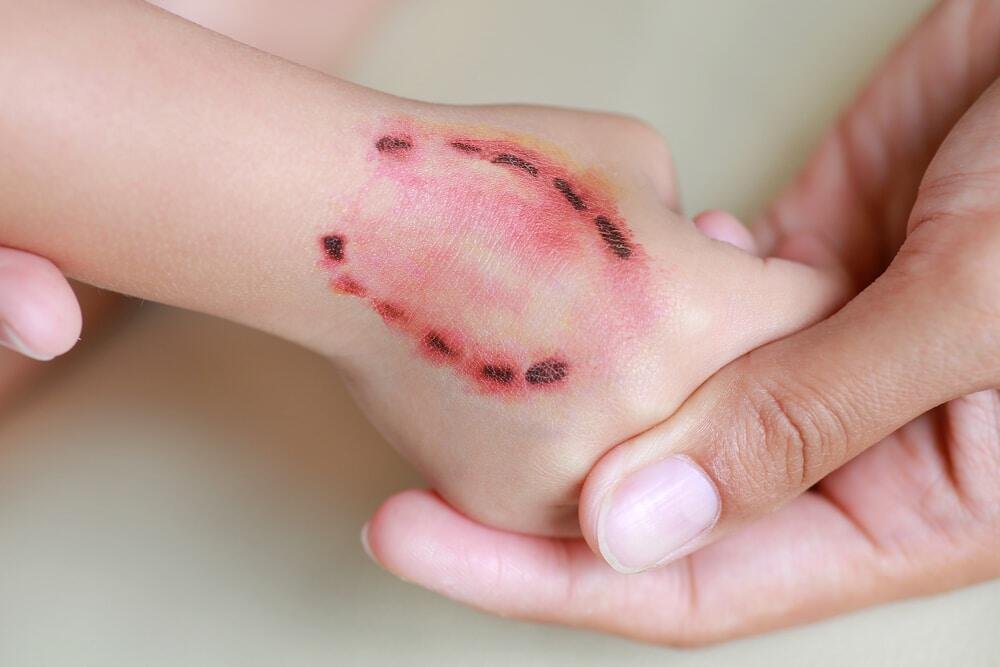What is Gout?
Gout is a painful type of arthritis. It causes stiffness, swelling, and severe pain in a joint. In most cases, gout affects the joint in your big toe. Health experts have revealed that uric acid in the bloodstream leads to this kind of arthritis. There are risks of gout reoccurrence once it occurs. These attacks damage your tissues in an inflamed region. Gout often considers as the outcome of the cardiovascular and metabolic disease. Moreover, gout is one of the common types of inflammatory arthritis, especially in men and post-menopause women are prone to it as well.
Types of Gout
There are certain stages through which gout progresses which are described as the types of gout.
1. Asymptomatic Hyperuricemia
This type of gout increases your uric acid levels but does not show significant symptoms. Therefore, treatment is not required. You need medical assistance when uric acid starts to build-up when these urate crystals accumulate in your tissues as it causes damage.
2. Chronic Tophaceous Gout
Doctors consider this level of gout is debilitating as it causes severe damage to your kidneys and joints. People who have chronic arthritis develop big lumps of urate crystals in areas like finger joints which are cooler parts than the rest of your body. However, this condition requires time to develop and it is unlikely to reach this level if you are treating gout since the beginning.
3. Acute Gout
Acute gout is when urate crystals accumulated rapidly and cause inflammation and severe pain. This unexpected attack is known as a flare that reduces in 3-10 days. Moreover, factors such as drugs, alcohol, cold weather, or even stress can trigger flares.
4. Interval or Inter-critical Gout
This type is your condition between attacks and the onset of acute gout. Although the flares do not occur for months or years in most cases, if you do not opt for the treatment, they might occur and last longer than usual. Plus, there is a risk of more urate crystals accumulation in your tissues during the interval.
Symptoms of Gout

People who have developed gout revealed that most of the symptoms of gout occur at night. You can opt for the right treatment if you detect these signs at the initial level.
1. Lingering Discomfort
In the case of gout, discomfort is common and it stays for an extended time. The attacks of gout pain are lasting and damaging after this lingering discomfort.
2. Difficulty in Movement
When gout starts progressing in your body, you become unable to move your joints due to stiffness.
3. Severe Joint Pain
Gout affects large joint of your big toe, however, it occurs in any joint of your bodies such as wrists, fingers, ankles, elbows, and knees. Moreover, this pain increases after 12 hours once it begins.
4. Redness and Inflammation
In this case, your one or two joints become red, warm, swollen, and tender.
Causes of Gout
Studies have indicated that gouts occur when urate crystals build up in your joint. This condition leads to severe pain and inflammation in the affected area. The leading cause of urate crystals is high levels of uric acid in your bloodstream.
It happens when your body produces uric acid after the break down of purines – a substance present in your body naturally. Moreover, you can find purines in certain foods such as seafood, steak, and other organ meats. Food sources like beer, drinks containing fructose, or alcoholic beverages can also promote the level of uric acid in your body.
Although your body naturally dissolves uric acid and eliminates it from by urination, if your body produces excessive uric acid or your kidneys excrete small portions of it, it leads to gout. In this case, uric acid accumulation builds sharp and needle-like urate crystals in your joint or tissues that contribute to swelling, pain, and inflammation.
Treatment of Gout
Gout is a curable type of arthritis. There are several treatments and medicines available to combat the symptoms without hurting your health. In gout, medicines are given to prevent future flares and to reduce the risks of further health complications such as the development of tophi and kidney stones.
Many doctors prescribed medicines like corticosteroids, colchicines, and nonsteroidal anti-inflammatory drugs (NSAIDs). You can take these medicines orally to lower inflammation and pain in the affected area. Medicines such as allopurinol are given to reduce the production of uric acid and to improve the functioning of kidneys which help remove the excess uric acid.
However, avoid self-medication and consult with your doctor in case of gout to get the right treatment.
What are The Risk Factors of Gout?
1. Genetic Factors
You are more likely to develop gout if you have family history. Therefore, opt for precautionary steps to prevent this debilitating condition.
2. Gender and Age
Although men produce a high level of uric acid than women, some post menopause women may develop gout due to overproduction of uric acid.
3. Medicines
Certain diuretics and drugs that contain salicylate increase uric acid levels in your body.
4. Lifestyle
Excess alcohol consumption prevents the normal elimination of uric acid from your body. Moreover, if you eat a purine-rich diet, you are likely to develop gout arthritis as well.
5. Weight
Obese individuals are prone to gout due to excess turnover of body tissue which increases the production of uric acid. Moreover, high fats in your body also lead to systemic inflammation due to the production of pro-inflammatory cytokines.
6. Health Complications
Gout arthritis can be an outcome of other health problems such as kidney disorders that hinder proper removal of waste products from your body which ultimately increases uric acid. Plus, in many cases, diabetes, underactive thyroid gland, and high blood pressure contribute to gout.
Useful Tips
You can opt for lifestyles changes to lower the risk of flares reoccurrence or the onset of gout in the first place. Dietary changes are a must when struggling with gout arthritis. You should make the following changes in this context.
- Reduce alcohol consumption. You can drink coffee or tea in moderation.
- Increase the intake of vitamin C.
- Consume whole foods, plant-based foods and avoid purine-rich food such as asparagus, beef, anchovies, gravy, dried beans, peas, mushrooms, sweetbreads, sardines, mackerel, and scallops.
- Maintain a healthy weight.
- Increase water or fluid intake. Drink at least two liters of water whether you have gout or not. Water helps your body in removing urate crystals, toxins, waste materials, or excess salts without hurting your health. 8-10 glasses of water are necessary to prevent the onset of gout.
Bottom Line
Gout arthritis brings pain, inflammation, and discomfort. We suggest consulting with a doctor immediately to protect your health from further damage.



